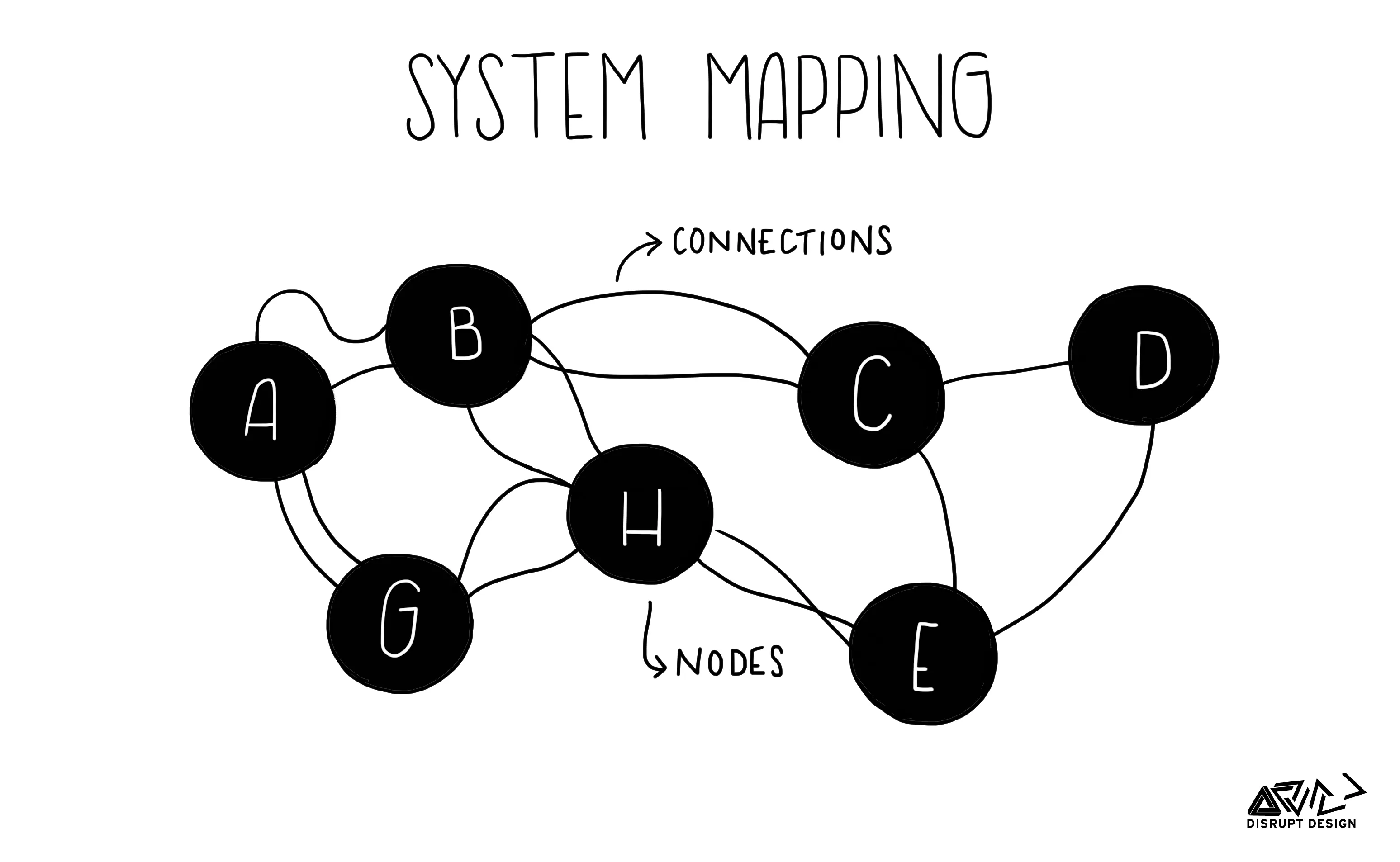Entrepreneurial Mindset Strategy: Connections & Systems-thinking
 Overview and Introduction: The WHAT and WHO
Overview and Introduction: The WHAT and WHO
Making connections between disciplines, resources, and viewpoints to gain a better insight is an important part of an entrepreneurial mindset. The entrepreneurial mindset (EM) is a problem-solving approach that begins with curiosity about our changing world, connecting information from various resources to gain insight, and identifying unexpected opportunities to create value.
Connections can also be viewed as taking a systems-thinking approach, which in engineering is a method of designing and analyzing systems that considers the relationships (or connections) between components of a system [1, 2]. Systems-thinking is used to understand how different parts work together and how changes to one area may affect the rest of the system. This way of thinking does not mean students have complete knowledge of every component, but an understanding that there may be unknown connections that they need to uncover [3].
Students that are able to make connections will ask [4]:
- How do my experiences, my past knowledge, and new information relate?
- What else might be relevant within the larger system or over time?
- What are all the implications and consequences (intended, or otherwise) of my work?
Incorporating connections and systems-thinking for students can benefit faculty who teach all levels and types of engineering classes.

 Implementation and Timing: The WHEN, WHERE, and HOW
Implementation and Timing: The WHEN, WHERE, and HOW
Faculty can help students early on to build a mindset that connects multiple spheres of context, systems, data, and even experiences to be successful [5]. This early exposure can allow students to begin to think with a systems-perspective throughout their education. Integrating connections can be through assignments, in-class activities, or as elements of a project. Connections and systems-thinking can be integrated across any course context, including in-person and online courses.
Implementation Ideas to Inspire Connections [5]
- Design with connections learning outcomes in mind. Consider first how connections and a systems-thinking perspective can connect to your course learning outcomes [6]. A few examples include:
- Use multidisciplinary expertise to frame problems
- Design technical solutions that factor in the complexities of the user and environment
- Work collaboratively with others
- Integrate several topics. Design activities and assignments where students integrate technical topics, relating one to another. One potential activity is having students create a concept map. As described in more detail on the Concept Maps Quick-Reference Guide, students can use concept maps to:
- Brainstorm ideas and solutions
- Summarize and connect course content
- Build on their understanding of connections over time
- Create a consistent ‘What if?’ check in. Faculty can have students assess “What if?” with regard to connections to key people, organizations, political environments, regulations, competitors, processes, and design changes.
- What are the unintended consequences? Create discussions or reflection activities where students think about the potential unintended consequences of their work.
- What about scale? When designing solutions, have students plan for decisions associated with increasing scale or production.

 Rationale and Research: The WHY
Rationale and Research: The WHY
The president of the American Society for Engineering Education, Adriene Minerick, recently advocated for the need of systems-thinking in engineering education and a culture shift for more openness and diverse perspectives [7]. She shared in a 2022 letter, ‘Systems-level perspectives can both help resolve 2022 problems and generate sustainable solutions for 2050 and beyond’ [7, p. 40]. Engineering education researchers have also called for a culture shift, and a need to map the current cultural landscape using practical tools [8]. For engineers to succeed in a world in which data is exponentially increasing, they will need to broaden their thinking and see multiple viewpoints and solutions [5].

 Additional Resources and References
Additional Resources and References
See below for additional resources to integrate connections in course content, along with references from the above sections.
- Electrical Circuits Concept Map Activity by Marnie Wong (Dropbox): This assignment requires students to define each of the technical concepts in a basic circuits course and, using concept mapping, find the connections between the different concepts.
- Informed Decisions and Strategic Learning Assignment by Daryl Morrell (Dropbox): Students describe the ecosystem in which the industrial partner and their customers exist, including relationships between elements.
- Framework for Applying Ways of Thinking in Engineering Education (FAWTEER) by Medha Dalal, Adam Carberry, & Leanna Archambault: Systems thinking is one of four ways of thinking mentioned in this framework, which includes compilation of the underlying concepts, abilities, and enhancement approaches.
Exemplar KEEN Cards
- Connections: What do we mean? by Doug Melton (Kern Family Foundation) & Joe Tranquillo (Bucknell University)
- Concept Mapping, a Tool for Assessment of First Year Students’ Understanding of the Design Process by Haolin Zhu and Tirupalavanam Ganesh (ASU)
Like these resources? See a full list of entrepreneurially minded content here, created by Robust Entrepreneurially Minded Leaders (REMLs) at ASU.
References
[1] N. N. Kellam, M. A. Maher, and W. H. Peters, “The faculty perspective on holistic and systems thinking in American and Australian mechanical engineering programmes,” European Journal of Engineering Education, vol. 33, no. 1, pp. 45-57, 2008.
[2]M. Dalal, A. Carberry and L. Archambault, “Developing a Ways of Thinking Framework for Engineering Education Research”, Studies in Engineering, vol. 1, no. 2, p. 108–125, 2020.DOI: https://doi.org/10.21061/see.38
[3]Godfrey, P., Crick, R. D., & Huang, S. (2014). Systems thinking, systems design and learning power in engineering education. International Journal of Engineering Education 30(1), 112-127.
[4] https://engineeringunleashed.com/card/1448
[5] “Connections,” Engineering Unleashed, [Online]. Available: https://engineeringunleashed.com/connections.
[6] J. P. Monat, T. F. Gannon, and M. Amissah, “The case for systems thinking in undergraduate engineering education,” International Journal of Engineering Pedagogy (iJEP), vol. 12, no. 3, pp. 50–88, 2022.
[7] A. Minerick, “Letter from the President: Strategizing Our Future,” ASEE Prism, 08-Feb-2022. [Online]. Available: https://www.asee-prism.org/asee-today-feb-8/. [Accessed: 01-Feb-2023].
[8] Godfrey, E., & Parker, L. (2010). Mapping the cultural landscape in engineering education. Journal of Engineering Education, 99(1), 5–22. DOI: https://doi.org/10.1002/j.2168-9830.2010.tb01038.x
